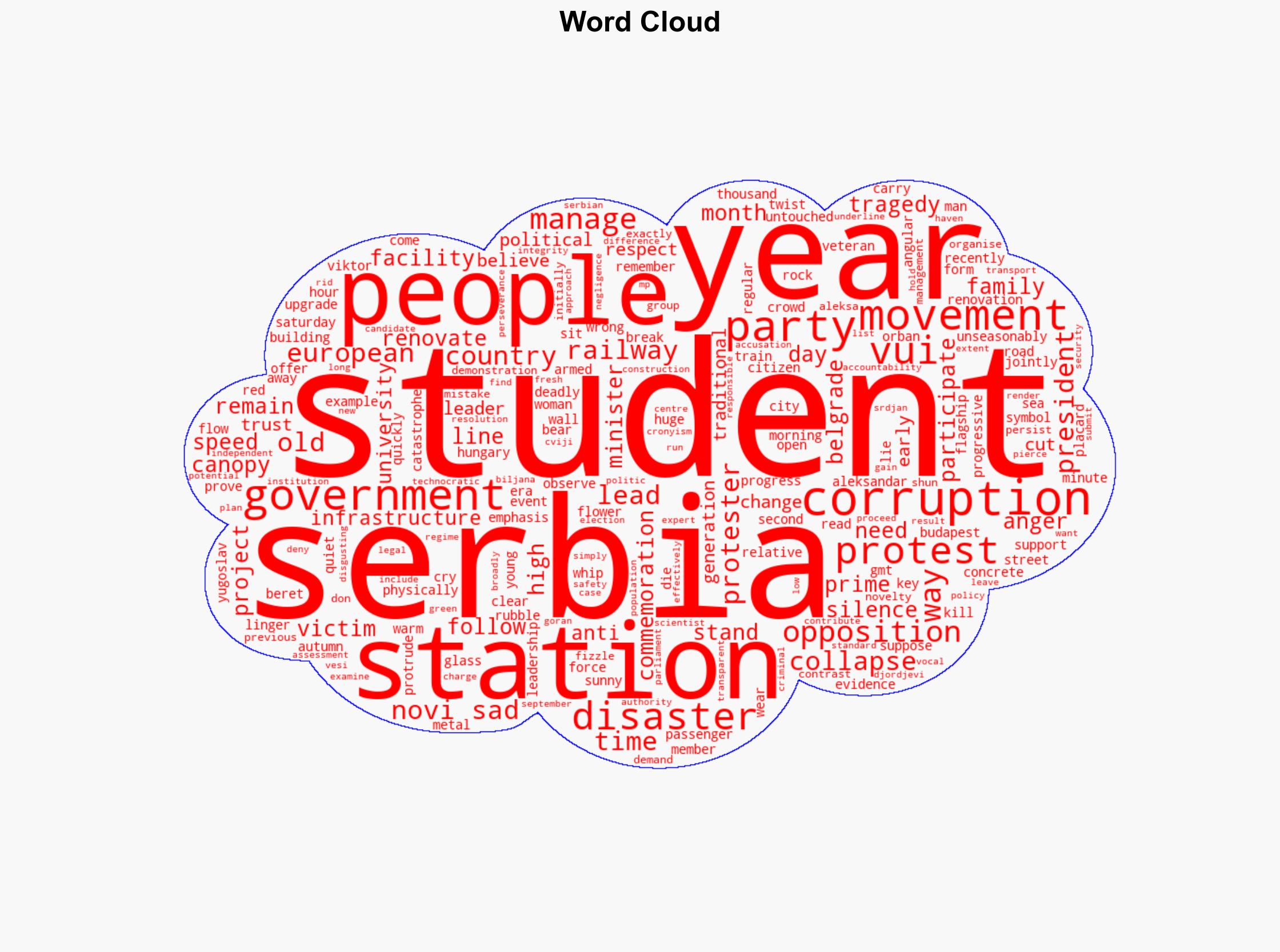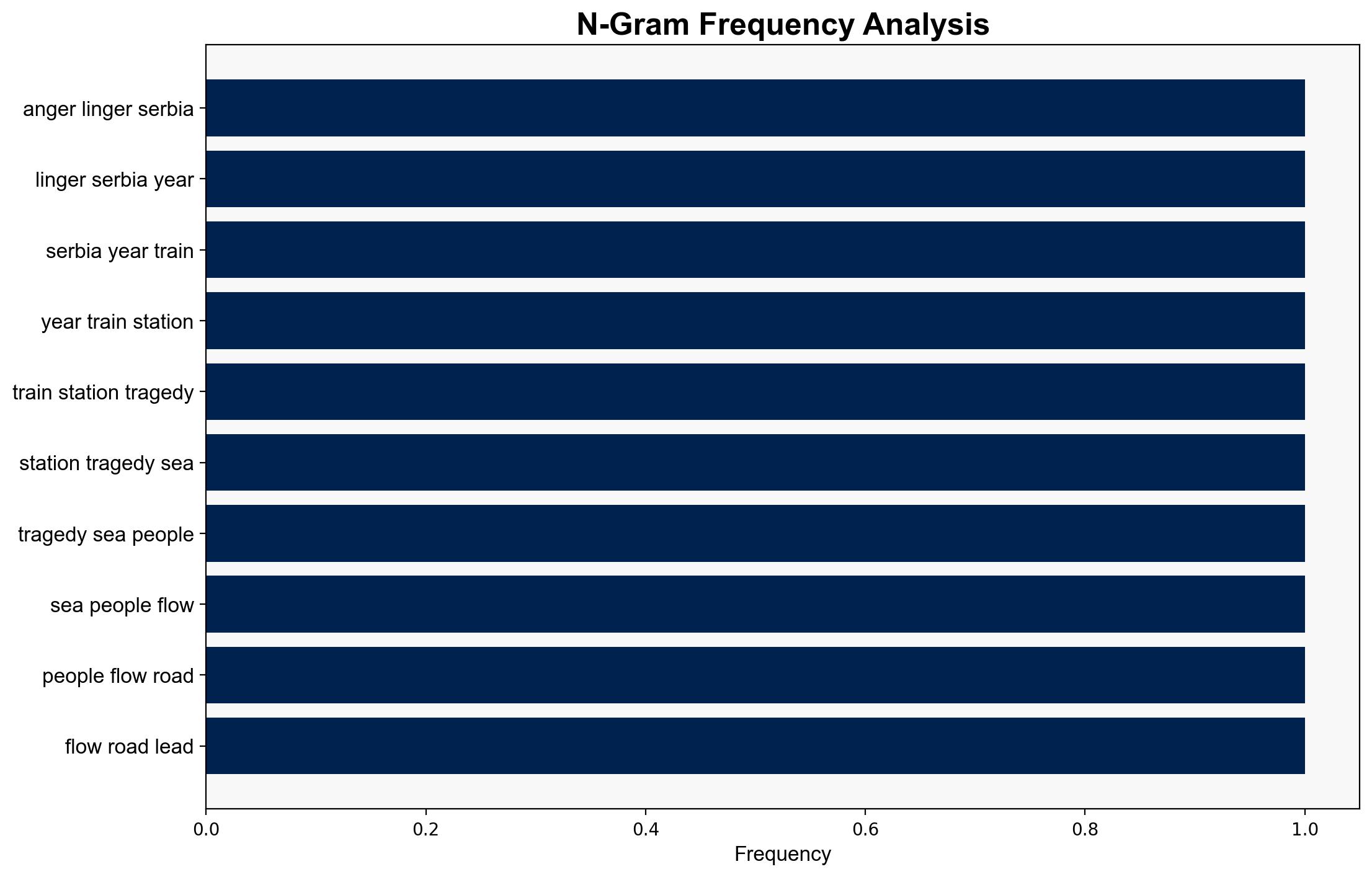Anger lingers in Serbia a year after train station tragedy – BBC News
Published on: 2025-11-01
Intelligence Report: Anger lingers in Serbia a year after train station tragedy – BBC News
1. BLUF (Bottom Line Up Front)
The most supported hypothesis is that the train station tragedy in Serbia has catalyzed a sustained anti-government movement, driven by public frustration over corruption and governance failures. Confidence level: Moderate. Recommended action: Monitor the evolving political landscape in Serbia for potential shifts in governance and public policy, while assessing the impact on regional stability.
2. Competing Hypotheses
1. **Hypothesis A**: The train station tragedy is primarily a result of systemic corruption and negligence within the Serbian government, leading to public outrage and sustained protests.
2. **Hypothesis B**: The tragedy is being used by opposition groups to galvanize public sentiment against the government, with the protests being more politically motivated than a genuine grassroots movement.
Using the Analysis of Competing Hypotheses (ACH) 2.0, Hypothesis A is better supported. The persistence of student-led protests and the specific focus on anti-corruption suggests a genuine grassroots movement rather than purely political manipulation.
3. Key Assumptions and Red Flags
– **Assumptions**: It is assumed that the public’s distrust in the government is primarily due to corruption and governance failures. Another assumption is that student-led protests are independent of political party influence.
– **Red Flags**: The potential for political parties to co-opt the movement for their agendas. Lack of detailed evidence on the extent of corruption within the infrastructure projects.
4. Implications and Strategic Risks
– **Patterns**: The persistence of protests indicates a potential shift in public engagement and political activism in Serbia.
– **Cascading Threats**: Prolonged unrest could destabilize the region, impacting economic and political alliances.
– **Potential Escalation**: If the government fails to address corruption, protests may intensify, leading to broader civil unrest.
5. Recommendations and Outlook
- Encourage diplomatic engagement with Serbian authorities to promote transparency and accountability in infrastructure projects.
- Monitor student movements for signs of co-optation by political entities.
- Scenario Projections:
- Best: Government reforms lead to reduced corruption and increased public trust.
- Worst: Escalation of protests results in violent clashes and political instability.
- Most Likely: Continued protests with incremental government concessions.
6. Key Individuals and Entities
– Aleksandar Vučić
– Viktor Orban
– Goran Vesić
– Aleksa (student protester)
– Biljana Đorđević
– Srđan Cvijić
7. Thematic Tags
national security threats, regional focus, governance, public protests, infrastructure safety




